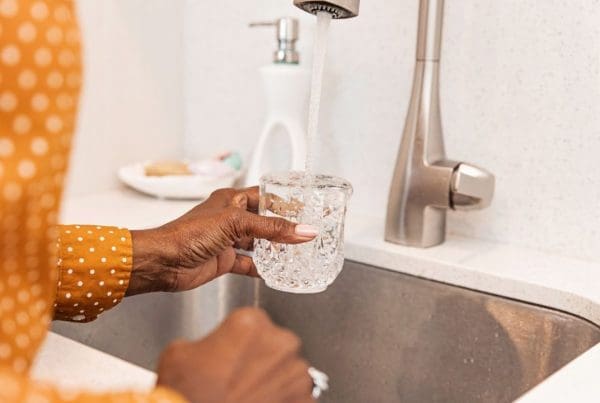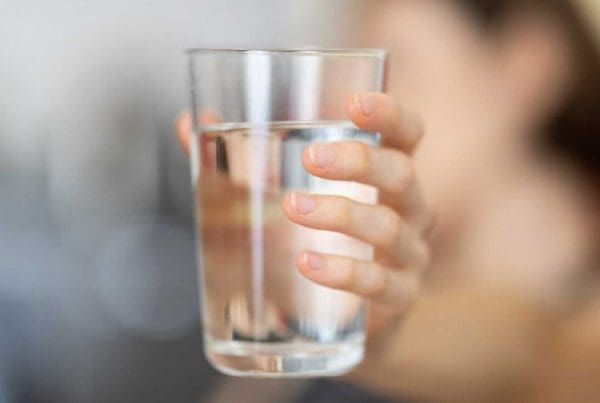The Science Behind Reverse Osmosis Water
If you’re looking for a water filter that will provide great-tasting, fresh drinking water for your home or business, reverse osmosis (RO) water filtration is one of the most popular and cost-effective water filtration methods available. In simple terms, a reverse osmosis water filter works as water is forced across a semi-permeable membrane, leaving contaminants behind that are flushed down the drain.
The clean drinking water collects in a holding tank. Reverse osmosis water filtration has proven to be unrivaled when it comes to removing impurities in an efficient and cost-effective manner. Because reverse osmosis can effectively remove a wide range of impurities, RO technology is becoming increasingly popular.
However, because it eliminates virtually all contaminants, people often wonder if RO water removes essential minerals, as well as fluoride their children need. This post will answer some of the common myths and misconceptions about reverse osmosis drinking water.
Does RO Water Remove Fluoride That My Children Need?
 For more than 70 years, fluoride has been added to America’s public water supply. Fluoridation began after scientists found that people had fewer cavities if they lived in an area where fluoride was naturally more prevalent in the water.
For more than 70 years, fluoride has been added to America’s public water supply. Fluoridation began after scientists found that people had fewer cavities if they lived in an area where fluoride was naturally more prevalent in the water.
Today, the American Dental Association (ADA) continues to advocate for fluoridation, arguing that it is helpful to the American public. What started out with one water supplier adding fluoride to water in the 1940s, has increased to 67 percent of homes in the U.S. now receive fluoridated water.
The U.S. Department of Health and Human Services recommends the level of fluoride in drinking water be “no higher than 0.7 mg/L to reduce the risk of dental fluorosis among children.”
But many are starting to wonder if the practice of fluoridating the public water supply is not such a good idea. Here are some reasons:
*Once added to the water supply, there is no way of controlling the dose of fluoride; it goes to everyone regardless of weight, health, age, and need.
*Fluoride is known to have toxic properties at low doses.
*Many children already exceed the daily fluoride intake recommendations from toothpaste alone.
*Fluoride accumulation may make bones brittle and prone to fracture.
*A study in England suggests that water fluoridation may increase the risk of developing hypothyroidism, or under-active thyroid.
Are Healthy Minerals Missing From RO water?
 In a reverse osmosis filtration system, the membrane and filters are used to catch the water before it’s poured out. It’s filtration at its most basic, just on a microscopic scale. The RO membrane allows water to pass through and into your glass. However, it leaves behind anything with a larger particle size than its 0.0001-micron pore size. To put that in perspective, 1 micron is equal to around 0.00004 inches. A human hair is around 75 microns in width (source).
In a reverse osmosis filtration system, the membrane and filters are used to catch the water before it’s poured out. It’s filtration at its most basic, just on a microscopic scale. The RO membrane allows water to pass through and into your glass. However, it leaves behind anything with a larger particle size than its 0.0001-micron pore size. To put that in perspective, 1 micron is equal to around 0.00004 inches. A human hair is around 75 microns in width (source).
The semipermeable membrane catches and holds bacteria and impurities in the water. It also prevents salt and other minerals from passing through too. This means that reverse osmosis water doesn’t contain the minerals you’d normally drink. In areas where the water contains dangerous contaminants and is unsafe to drink, reverse osmosis can be quite literally a life-saver. However, as a trendy health accessory in the western world, is it doing more harm than good?
While it is true that RO water doesn’t have many of the essential nutrients you need for your health, The amount of these healthy nutrients in normal tap water is negligible. The contaminants, on the other hand, are much more numerous. The missed nutrients can easily be made up for in your diet or from supplements. Is it worth exposure to hundreds of contaminants just to get a small dose of nutrients that could easily be found elsewhere? Obviously, not.
Is RO Water Scientifically Altered?
 The term reverse osmosis is not very common in daily life. This leads a lot of people to think that the water has been treated in some way or another and that it has been modified by an unsafe process. The truth is that reverse osmosis is just a simple filtration process like any other filtration system you’ve ever come across.
The term reverse osmosis is not very common in daily life. This leads a lot of people to think that the water has been treated in some way or another and that it has been modified by an unsafe process. The truth is that reverse osmosis is just a simple filtration process like any other filtration system you’ve ever come across.
Reverse osmosis uses a film membrane and high pressure to push the water through the membrane. Water molecules are small enough to pass through the membrane, contaminants are not. Simple as that.
Once the water passes through the filtration system, the only thing that’s left is pure water, nothing else. There’s no alteration done to the water. When you drink a glass of RO water, you are drinking water in its purest form.
Although reverse osmosis water is not perfect, it is perfectly safe to drink. When the water passes through the membrane during the process, the product on the other end is totally clean water without any impurities. Yes, reverse osmosis water is 100% safe to drink.
What Else Does Reverse Osmosis Remove?
Reverse osmosis has its roots in military applications where it was used to create a drinkable water source when contamination was present. From this very critical use sprung a more commercial one, with households using reverse osmosis systems to create purer water. Reverse osmosis filters out fluoride and many other contaminants including sulfates, asbestos, chlorine, detergents, cadmium, lead, and more.
The footprint of a residential RO system is small and is typically installed under a kitchen sink. The system can also be connected to your refrigerator and ice machine. You might also consider installing a UV light water purifier to protect all the water coming into your home from microbiological contaminants such as viruses and bacteria.
Does Every Home in Central Indiana Need Reverse Osmosis?
C and J Water recommend RO water for every homeowner—for both city and well water residents. It is more cost-effective, convenient, and healthier than bottled water, not to mention more trustworthy than regular tap water. If you are ready to provide the best water for your family, contact us today!




